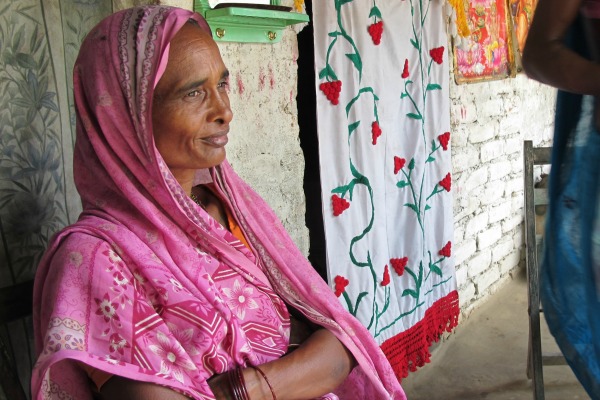Mithila art is most well known internationally for its association with gender equality and women’s empowerment; constituting South Asia’s most effective arts-based movement for same. The dynamics of Mithila art and gender equality and women’s empowerment are both practical and spiritual.
For example, regarding the latter, Tantric religion [both Hindu and Buddhist] is esoteric, and rooted in spiritual growth and related self-development through an awareness of the interconnection between Humankind and Nature, and the special characteristics of female and male and related spiritual principles of, and interplay between the two forces (known as ‘Yin-Yang’ in Chinese) on an equal basis. Mithila Art has its spiritual foundation in such egality between the two sexes, but emphasises the particular spiritual role that women play in day to day life and the greater order of Nature.
At a practical level, Mithila art works in dynamic project-focused ways (see below) to improve the status and quality of life of Nepali women.
Articles:
The Mahilako Swastha (Women’s Health) Quilts project:
‘In 2010, Peace Fellow Kate Bollinger worked with her host organization, the Women’s Reproductive Rights Program (WRRP), to help survivors of uterine prolapse tell their story through painting. The artists produced about 40 paintings onto fabric. These were then brought to the US and assembled into three advocacy quilts which have been used to promote WRRP’s work through exhibits around the United States.
The painting took place in the town of Rajbiraj, in the eastern district of Lahan. WRRP’s local office put out the word and about twenty women volunteered. As with other quilting projects, the project began on a note of uncertainty. Kate arrived after travelling for twelve hours in a bus. As she later wrote in her blogs: “We weren’t quite sure what to expect when we arrived. Would women show up? Would they be able to or want to paint?” ….
… Like other groups that have worked on quilts, the women found the process empowering and uplifting. “The women surpassed all of our expectations. They worked for hours straight, first sketching on their cloth with pencils and eventually in paint. They helped each other and gave each other advice. On the final day at Rajbiraj, the women gave everyone hugs and expressed how much they wanted to be able to work on their artwork more.”Each painting was an expression of the artist’s own feelings and Kate captured this in a series of small videos on the artists. Sulekha Dev, pictured in the photo, described her painting as follows through an interpreter:
“In this painting, I have made this woman who is suffering from third degree prolapse. She had the prolapse so she had difficulty in walking, eating, and speaking. She needed surgery. She was young when she was married. She lifted heavy loads. No one cared about her. And so she had the prolapse. When she came back after the [hysterectomy] surgery, she was still so young. She had a long life to live. She was happy. So, in this picture, she is collecting flowers to offer to the gods…. She feels so healthy… She feels so light.”
 |
Another artist, Phulo Devi Pahwan, said, “I have never done these kinds of paintings. I never handled a brush before the day we started this. I was wondering if I could do it or not. Now, after three or four days, my hands have become stable and it became easier.” Bijili Yadav (photo) said: “I used to weave baskets and prepare fuel from cow dung. But I have never done these kinds of paintings.” Many of these women expressed a strong desire to continue painting. They chose the name of Mahilako Swastha (“women’s health”) for their quilts … read more.
Source: Advocacynet.org website
Janakpur Womens Development Centre:
The Centre is at the heart of the Mithila arts women’s empowerment, millenia old, movement, and a leading force for current work and initiatives for gender equality in Nepal.
About the Janakpur Womens Development Centre [JWDC]: History
‘In response to a USAID study carried out by Clair Burkett, an American researcher, who helped to transfer rural poor Maithili women’s art of wall painting to paper work for income generating opportunity, supported to establish Janakpur Women’s Art Project (JWAP), in 1989. As a consequence of her tremendous efforts United Nation Development Fund for Women (UNIFEM) supported grants to run this project. In 1992, JWAP was registered under its present name Janakpur Women’s Development Centre (JWDC), in Nepali “Janakpur Naari Bikas Kendra”.
The JWDC is the first non-governmental organization in Nepal working to empower and support the women from Maithil culture in the Janakpur area. The Center is affiliated with the Social Welfare Council and is a member of Fair Trade Group Nepal. …’ read more.
Source: JWDC website.
